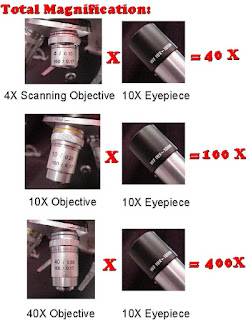A compound microscope is known as a high-power microscope that enables you to achieve a high level of magnification. Smaller specimens can be thoroughly viewed using a compound microscope. Let us take a look at the different parts of a compound microscope and understand each key component.
References
Image 1: The figure above is the standard image of a compound microscope.
image source: 5.imimg.com
The structural components of a compound microscope.
Picture 2: The basic parts of a compound microscope.
image source : optimaxonline.com
Head/body
it is where the upper optical parts of the microscope can be found.Base
It contains the illuminator, but its main function is to support the entire microscope.Arm
It is used to carry the microscope and at the same time connect the base of the microscope to the head. (1, 2, 3, and 4)
Image 3: A compound microscope with a corresponding label of the different parts.
imagesource: images.slideplayer.com
The optical components of a compound microscope.
Image 4: Eyepieces and objective lenses with corresponding magnifications.
image source: www.cas.miamioh.edu
Eyepiece/ocular
It is situated at the top of the microscope and comes in various magnifying power.Eyepiece tube
It holds the ocular or eyepiece just above the objective lens.Objective lenses
In a compound microscope, the objective lenses are the main lenses which range from 4x to 100x.Nosepiece
It is where the objective lenses are placed. You can easily rotate the nosepiece, which makes it easy for you to choose your preferred objective lensCoarse and fine focus knobs
They are the parts of the microscope mainly used to focus the microscope. (4, 5, 6, and 7)Stage
The area of the microscope where the specimen to be studied is placed. When working with higher magnifications, a mechanical stage is used as it allows easy movement of specimen slide, specifically, when working with delicate specimens.Stage clips
When there’s no mechanical stage, then a staged clip is used. You should move the slide manually and secure it in place with a staged clip.Aperture
If you look at the microscope, you will notice that there is a hole in the stage where the light reaches the stage.Illuminator
It is the source of light for the microscope. It is situated at the base of the microscope. The majority of compound microscopes use a low voltage halogen bulb.Condenser
Its main function is to collect and focus the light from the light source (illuminator) on to the specimen. It is found under the stage adjacent to the iris diaphragm.Iris diaphragm
Its main function is to control the amount of light that reaches the specimen. It is strategically located at the top of the condenser and just below the stage.Condenser focus knob
The function of the condenser focus knob is to move the condenser in upward or downward motion so as to control the amount of light that reaches the specimen. (5, 7, 8, 9, and 10)For school student
(Right click for print out)
(Right click for print out)
References
- https://www.microscope.com/compound-microscope-parts
- https://www.microscopemaster.com/parts-of-a-compound-microscope.html
- https://courses.lumenlearning.com/ap1x94x1/chapter/the-parts-of-a-compound-microscope-and-how-to-handle-them-correctly/
- https://byjus.com/biology/study-of-the-parts-of-a-compound-microscope/
- http://www.biologydiscussion.com/botany/practicals-botany/parts-of-compound-microscope-botany/54527
- https://www.amscope.com/microscope-parts-and-functions/
- https://www.slideshare.net/nairamode/parts-and-functions-of-a-compound-microscope-14355822
- http://www.learningaboutelectronics.com/Articles/Compound-microscope-and-its-parts.php
- http://www.microbehunter.com/parts-of-a-compound-microscope/
- https://www.edutrade.co.za/blog/key-parts-of-a-compund-microscope-and-how-they-function.html







